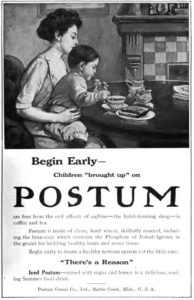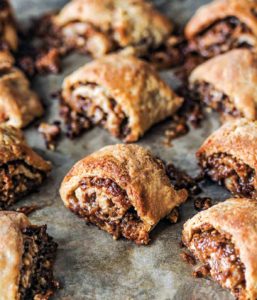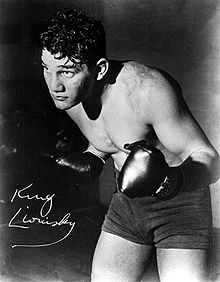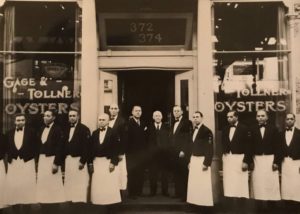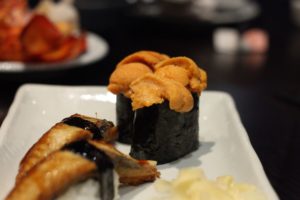In the refrigerator, there were three ears of Blum’s sweet corn. Although more than a week old, they were still fresh enough for corn pancakes. Yes, HG obeys the “waste not, want not” proverb. So, HG shucked the corn and added the kernels to pancake batter, milk, beaten egg and a dash of canola oil. Fried on an oiled griddle and doused with a goodly amount of Canadian maple syrup, this was a pleasant breakfast on a grey, cold day on Prince Edward Island. When HG was a youngster attending P.S. 86 elementary school in The Bronx, home was just a few blocks away. This made it possible for the little fellow to lunch at home. Often, HG’s late Mom prepared pancakes using Aunt Jemima Pancake mix. The pancakes got a pat of butter plus Log Cabin Maple Syrup. HG doesn’t know whether the maple syrup was the real thing but loved the tin container fashioned into a faux log cabin. The beverage was Postum with hot milk. Postum is still being manufactured. It is a whole-grain, “healthy” alternative to coffee. Rarely see it in supermarkets but, like everything in life, it can be ordered on Amazon. It is, how shall HG put it, an “acquired” taste.
Pancakes and Postum
October 4th, 2019 § 0 comments § permalink
Yom Kippur. No Food. No Sex.
October 1st, 2019 § 0 comments § permalink
HG is writing this on Sept. 30 after an epic Rosh Hashonah food and musical evening. HG will be writing about this event in an upcoming post but, for now, let’s focus on Yom Kippur. This day of atonement (and HG has plenty of sins to atone for), will begin at sundown on Oct.8 and end on the night of Oct 9, a 25 hour period. Synagogue services will begin with a Cantor chanting Kol Nidre, a tribute to a forgiving god. (Many good versions of Kol Nidre can be found on YouTube). During this time observant Jews fast. No food. No drink (including water). Washing or bathing is forbidden as are lotions, creams and wearing leather footwear. Conjugal sexual relations are forbidden. As a confirmed atheist and humanist, HG does not observe Yom Kippur. However, HG and Episcopalian BSK, treat Rosh Hashonah as a delightful New Year’s Eve (this year is 5780). Much better than the conventional Dec. 31 event. Though HG’s parents were socialists, secular in outlook and lax about kashruth (keeping a kosher home), they were strict about observing Yom Kippur and strict about HG fasting. Rebellious HG would disappear from home and play basketball with Our Lady of Angels Catholic School boys. Would return famished – the celebratory end-of-fast meal many hours away. In a recent communication, Peter H., the renowned writer, reminded HG of an incident of sinful gluttony in HG’s youth. HG’s late Mom made sensational rugelach. These pastries had a flaky crust and were crammed with walnuts, raisins, cinnamon and honey. Not to be resisted. And, naughty HG did not resist. Mom and Pop were at the Kingsbridge Heights Synagogue (Yom Kippur was the one day when they both attended). So, HG ate one of the 10 rugelach which were meant for the end-of-fast night meal. The day went on and the greedy lad kept nibbling and soon all of the rugelach were gone. Mom came home. Began screaming “Gahnuvim!!” (thieves). The rugelach were close to the rear door. Mom was convinced that a rugelach burglar had entered. Told HG to call the police. HG confessed. Using early public relations skills, HG told Mom the rugelach were too tempting and should have been placed under lock and key. Mom didn’t buy this justification. Mom and Pop did not believe in corporal punishment (thankfully) but there were many harsh words from them. This did not prevent naughty HG from participating in the lush night meal. After all, a growing boy had to eat.
Waste Not. Want Not.
September 28th, 2019 § 1 comment § permalink
HG’s late beloved Mom grew up in a tiny, impoverished “shtetel” in the Minsk province of Russia. She was a thrifty woman who managed to feed her family amply during The Great Depression. Nothing was ever wasted. Leftovers were recycled into some tasty and some outlandish meals. Every drop of a chicken was utilized. Chicken soup (with noodles). Boiled chicken with horseradish and boiled potatoes. Chicken skin rendered into chicken fat and “grieven” (fried crisp skin much like–sacrilege–a pork rind). Liver was incorporated in chopped calf’s liver or sauteed as a special treat for little HG. Bones, gizzard, neck were the basis of stock and chicken feet (despised then and now by HG) gave a gelatinous touch to “tzimmes”, carrots cooked with honey, ginger, chicken fat and garlic (delicious). Even the wishbone had a function. Mom covered it in crochet. It hung on a wall and was a repository for thimbles and needles. No, BSK is not an obsessive like Mom, but she has a dab hand at using leftovers and food remnants. A few nights ago, BSK made a parsley pesto for a crudites dip. It wasn’t eaten as HG/BSK and guests devoured many oysters. Not wasted. BSK put it to good use as a sauce (with additional oil, garlic and stock) for a pasta dish of pappardelle with perfectly done fresh cauliflower florets dusted with parmesan and red pepper flakes. Waste not. Want not.
Fifth Avenue Department Stores
September 20th, 2019 § 0 comments § permalink
When HG lived in Manhattan during the 1950’s and ’60’s, New York’s Fifth Avenue was lined with department stores and women’s fashion emporiums. Bergdorf Goodman (still there as it has been for more than 100 years) was at the corner of 57th Street with Tiffany’s (still there) and Bonwit Teller (gone) across the street. The fashion parade continued with I. Miller Shoes (gone), BSK’s fave for classy footwear; DePinna (gone), excellent men’s suits, shirts and ties; Best & Co. (gone), famed for women’s gloves; Saks Fifth Avenue (still operating and flourishing). To the dismay of folks who wanted to preserve the avenue’s elegant image, E.J. Korvette (gone), the pioneer discounter, opened on Fifth (it was where HG bought a bargain TV). South of 42nd Street, there was Franklin Simon (where BSK bought a lovely hat for the HG/BSK wedding reception at the St. Regis Hotel); Arnold Constable, Lane Bryant (for the ample lady); Lord & Taylor; W.J. Sloane Furniture; Russek’s (the great photographer, Diane Arbus, was from the family who owned the fashion store). B. Altman was on the corner of 34th Street and Fifth. Ohrbach’s was nearby on the north side of 34th. All have vanished and some of the luster that made Fifth Avenue unique. However, keeping avenue elegance alive are Van Cleef & Arpels (744 Fifth) and Cartier (653 Fifth), the jewelry and watch shops much patronized by New York’s new generation of wealth and oligarch tourists. Many of the department stores had pleasant lunchrooms. The best was at B. Altman. And, HG often had a steaming bowl of soup at Lord & Taylor.
Failure
September 14th, 2019 § 0 comments § permalink
HG has happy memories of perfect New York meals. At Veau D’or: Brains in back butter preceded by sausage with warm potato salad. At The Russian Tearoom: Blini with red caviar, melted butter and sour cream preceded by borscht. At Paul & Jimmy’s: Poached striped bass in brodo with a starter of linguine with white clam sauce. At Christ Cella: Lump crab meat cocktail, New York strip steak, Roquefort cheese salad. At Gitlitz Delicatessen: Pastrami and chopped liver on rye with coleslaw, Russian dressing and pickles. At Delsomma: Penne in broccoli sauce, pork chops with vinegar peppers and potatoes. At Fornos: Margaritas and roast pork with Spanish potatoes and broiled bananas. At Luchow’s: Pfefferlinge (wild mushroom fricasee) and Schlemershnitte (steak tartar covered in Beluga caviar). Blue Ribbon: Grilled bratwurst with sauerkraut and home fries followed by apple pancake. Artist & Writers: Dry martinis and koenigberger klops (meatballs in a dill and sour cream sauce). Paramount Dairy: Warm gefilte fish in fish broth and kashe varnishkes with mushroom and onion gravy. Nom Wah (of yesteryear): Dim sum. (HG has written about HG’s perfect meals at Gage & Tollner in a previous post). These are all joyous meals but they pale compared to the meal HG would relish often at the counter of the Grand Central Oyster Bar. Eight chilled oysters on the half shell. Oyster Pan Roast. Nesselrode pie. The pan roast was prepared behind the counter in a special pot by a dour, unsmiling older Italian. It was incomparable, redolent of the sea and the richness of farmland. For years, HG/BSK have tried to replicate this dish. The ingredients and cooking technique are simple. However, HG/BSK have always failed. Their attempts created a pallid dish, in no way comparable to the Oyster Bar wonder. HG tried again last night using big, plump Red Head Select oysters. The result: FAILURE.
“Hit Em In The Kishkes!!”
September 5th, 2019 § 0 comments § permalink
From the 1920’s into the late 50’s Jews –as fighters, managers and promoters–were prominent in the world of professional boxing. The lighter weight divisions were dominated by Jews like Benny Leonard, Ted Kid Lewis, Ruby Goldstein, Abe Attell and many others. Later. in the heavier divisions there there were the Brownsville Brooklyn battlers like Al “Bummy” Davis, Morrie Reif, “Schoolboy” Friedkin and others, Also, heavyweights like Maxie Rosenbloom, Max Baer and “Kingfish” Levinsky. Jewish managers like Al Weill and Mike Jacobs dominated. Post World War Two America brought prosperity and opened opportunities for Jews that had been restricted by quotas and restrictions. Young Jews became lawyers, doctors, etc. Like Jewish criminals (Lepke Buchalter, Buggsy Siegel, Arnold Rothstein, etc. ,etc.), the Jewish world of boxing faded into the past, only remembered by nostalgic oldsters. An old guy like HG remembers watching Jewish battlers in New York at St. Nicholas Arena, Broadway Arena, the Forum. There was a belief that African- American fighters shrugged off blows to the head. Jewish fight fans would shout to their favorites: “Hit’em in the kishkes!!”. The Yiddish word “kishkes” means stomach or belly. The Jewish fighters followed this advice. Often misguided.
Gage & Tollner
September 3rd, 2019 § 0 comments § permalink
HG has often been asked to name a favorite restaurant. The answer is simple: The long closed Gage & Tollner on Fulton Street in downtown Brooklyn. The restaurant had a long run, 1879 to 2004. The interior featured dark wood panelling, patches of stained glass and colorful tiles. Gentle, flattering gas lamp lighting. The waitpersons, mainly dignified, courtly African-American males, were Gage & Tollner veterans, their years of service marked by bars on their uniforms. The menu tilted toward seafood but also had world class steaks and chops. HG always started the HG meal with either oysters or little neck clams on the half shell. Followed by incomparable “clam bellies” sauteed in butter. Main dish was a tender, medium rare mutton chop accompanied by corn fritters. In the spring, HG enjoyed shad and shad roe with crisp bacon and boiled potatoes. Dessert was Nesselrode pie. Not surprisingly, HG’s current New York favorite restaurants are those owned and run by HG daughter, Victoria, and husband/chef Marc Meyer (Vic’s, Cookshop, Shuka and Rosie’s. The opening of a fifth restaurant, Shukette, is imminent). HG’s favorite food city is Vancouver, B.C. Wonderful Asian food and the splendid Granville Island Public Market. Runner up is not Paris but Reims in champagne country. Perfect oysters, sole, etc. at a fraction of Paris prices.
Noo Yawk Hot Dogs
August 4th, 2019 § 0 comments § permalink
Though there are scores of food trucks in New York offering a wide array of top-quality food from around the globe, the Sabrett “dirty water” hot dog still flourishes. Are they good? No. They are boiled and float in salty hot water. When still wet, they are plunked on a mediocre roll. However, when this soggy mess is topped with mustard, sauerkraut and the concoction known as “pushcart onions” it appeases hunger. A culinary mystery. The best NYC hot dogs exist off the street. Papaya King (various locations) still rules. And, happily they are available online. So are the very good hot dogs served at Katz’s old-time deli on Houston Street. Schaller and Weber, the great German sausage and pork store, ships wieners (and knockwurst) so that true hot dog (or choucroute) feasts are now available for HG to enjoy in New Mexico and PEI. (BSK is ambivalent about these enticements). Strange fact: Best New York hot dog and kraut was served at a long-gone fast food counter in the Port Authority Bus Terminal on Eighth Avenue. With memory clouded by nostalgia, HG longs for the “specials” (bigger than a frank, smaller than a knockwurst) that were served many decades ago at the Tower Delicatessen and Restaurant on Kingsbridge Road in The Bronx. Long replaced in the neighborhood by Leche y Miel Dominican restaurant and other ethnic eateries (as HG has noted in a previous post). Hey, a Shrimp Mofonguito (lush) at Leche y Miel is a tasty sign of cultural and culinary diversity, says HG.
Gone. But, Not Forgotten.
August 2nd, 2019 § 0 comments § permalink
The west edge of New York’s theater district was once filled with inexpensive French bistros serving robust versions of traditional dishes (Chez Napoleon is the last survivor). These days it’s difficult to find their specialties on restaurant menus. (a victory for the Health Police). Some examples: Kidneys in mustard sauce. Calf’s liver grilled medium-rare. Head cheese (bits of the tongue, brains, etc. in aspic). Brains in black butter. Tripe. Jambon persille (an aspic filled with ham and parsley). Cardiologists don’t approve of these dishes. Further west near the Hudson River waterfront there were rough and ready bistros catering to sailors from the French ocean liners plus seamen who liked hearty dishes and pitchers of cheap wine. This was where HG first tasted a Matelote (sailor) seafood stew. An HG favorite was a matelote with eels. The eels were stewed into tenderness in fish stock and red wine filled with carrots, onions, garlic (much) and herbs. There was also a matelote made with pollock or cod (delicious). These bistros were always fragrant with the aromas of long-simmering stews of beef, pork and chicken. Perfect dining for people with big appetites and small purses. A filling meal with a pitcher of red wine cost less than a dollar.
Unagi and Uni: Love or Hate
July 28th, 2019 § 0 comments § permalink
HG/BSK are, for the most part, very united in their food tastes. However, HG likes steak and lamb blood rare and pork chops pink. HG likes fish cooked very briefly. BSK takes a more conservative approach to these edibles. The big taste divergence in HG/BSK’s 56-year marriage is about Unagi and Uni. These are wonderful staples at Japanese restaurants and sushi bars. Both are loathed by BSK. Broiled Unagi (freshwater eel) on a bowl of rice (Unagi Udon) is an HG favorite. The dish is enhanced by the sweet and pungent Unagi sauce made by simmering a mix of mirin, sake, sugar and soy sauce. Uni (the interior of a sea urchin) has a very distinctive iodine-rich taste, something like custard that has been infused by seawater. Love it or hate it. It usually tops sushi. In Paris, Le Stella brasserie serves a fresh sea urchin which is always ordered by HG. The top is cut off and one digs into the lush interior with a spoon while avoiding the porcupine-like surface. HG first tasted Uni at Sloppy Louie’s Restaurant at the old Fulton Street Fish Market in New York. Louis Morino, the owner, liked to serve unusual fish market finds at his (not Sloppy at all) eatery. HG ate four (10 cents each) and a love affair was born. One of the best pasta dishes HG ever consumed was on the Palermo waterfront: Linguine with sea urchin sauce. (Palermo rewards the adventurous eater. A favorite street food is spleen on a bun). As for Unagi, it must have mighty health benefits. Exquisite Maiko’s late grandfather ate Unagi every day until his death at 102. Whole Foods used to sell grilled Unagi at its fish counters. Discontinued. Sad.
